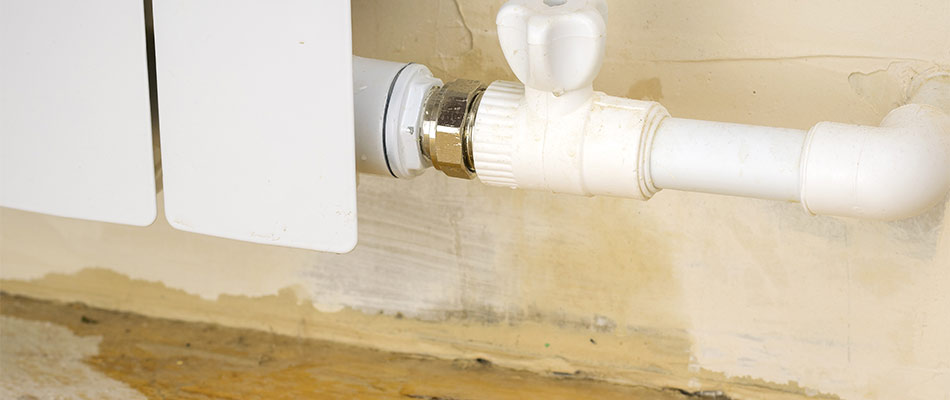Exactly how to Discover and Repair Service Water Leaks-- A Comprehensive Guide
Exactly how to Discover and Repair Service Water Leaks-- A Comprehensive Guide
Blog Article
What are your insights and beliefs on Leaking water lines?

Early detection of dripping water lines can mitigate a prospective catastrophe. Some tiny water leakages might not be visible.
1. Analyze the Water Meter
Every residence has a water meter. Checking it is a guaranteed manner in which helps you uncover leaks. For starters, switch off all the water resources. Ensure no one will flush, utilize the faucet, shower, run the cleaning device or dishwasher. From there, go to the meter and also watch if it will certainly change. Considering that nobody is using it, there need to be no movements. That indicates a fast-moving leak if it relocates. If you detect no changes, wait an hour or two and examine back once again. This means you may have a slow leakage that could even be underground.
2. Inspect Water Consumption
If you find sudden adjustments, despite your intake being the very same, it indicates that you have leaks in your plumbing system. An unexpected spike in your bill shows a fast-moving leakage.
Meanwhile, a constant boost every month, despite the same routines, shows you have a sluggish leakage that's also gradually escalating. Call a plumber to completely examine your residential property, especially if you feel a cozy location on your flooring with piping underneath.
3. Do a Food Coloring Test
When it involves water consumption, 30% originates from commodes. Test to see if they are running effectively. Decline specks of food color in the tank and also wait 10 minutes. There's a leak between the tank as well as dish if the shade in some way infiltrates your dish throughout that time without flushing.
4. Asses Exterior Lines
Don't forget to check your exterior water lines also. Must water leak out of the connection, you have a loosened rubber gasket. One small leakage can throw away heaps of water as well as spike your water bill.
5. Assess the situation and also check
Property owners need to make it a routine to inspect under the sink counters and also also inside cupboards for any bad odor or mold and mildew growth. These 2 red flags show a leak so punctual interest is required. Doing routine evaluations, also bi-annually, can save you from a significant issue.
Check for discolorations and deteriorating as the majority of pipes and home appliances have a life expectancy. If you suspect leaking water lines in your plumbing system, don't wait for it to intensify.
Early discovery of dripping water lines can minimize a possible disaster. Some tiny water leaks may not be visible. Inspecting it is a guaranteed method that assists you find leakages. One little leakage can throw away bunches of water and spike your water bill.
If you suspect leaking water lines in your plumbing system, don't wait for it to rise.
WARNING SIGNS OF WATER LEAKAGE BEHIND THE WALL
PERSISTENT MUSTY ODORS
As water slowly drips from a leaky pipe inside the wall, flooring and sheetrock stay damp and develop an odor similar to wet cardboard. It generates a musty smell that can help you find hidden leaks.
MOLD IN UNUSUAL AREAS
Mold usually grows in wet areas like kitchens, baths and laundry rooms. If you spot the stuff on walls or baseboards in other rooms of the house, it’s a good indicator of undetected water leaks.
STAINS THAT GROW
When mold thrives around a leaky pipe, it sometimes takes hold on the inside surface of the affected wall. A growing stain on otherwise clean sheetrock is often your sign of a hidden plumbing problem.
PEELING OR BUBBLING WALLPAPER / PAINT
This clue is easy to miss in rooms that don’t get much use. When you see wallpaper separating along seams or paint bubbling or flaking off the wall, blame sheetrock that stays wet because of an undetected leak.
BUCKLED CEILINGS AND STAINED FLOORS
If ceilings or floors in bathrooms, kitchens or laundry areas develop structural problems, don’t rule out constant damp inside the walls. Wet sheetrock can affect adjacent framing, flooring and ceilings.
https://www.servicemasterbyzaba.com/blog/how-to-detect-water-leakage-in-walls/

Do you appreciate reading about Leaking water lines? Leave feedback below. We'd be glad to see your suggestions about this blog post. Hoping to see you back again soon. You should take a moment to share this post if you appreciated it. We take joy in reading our article about Detecting hidden plumbing leaks.
Report this page